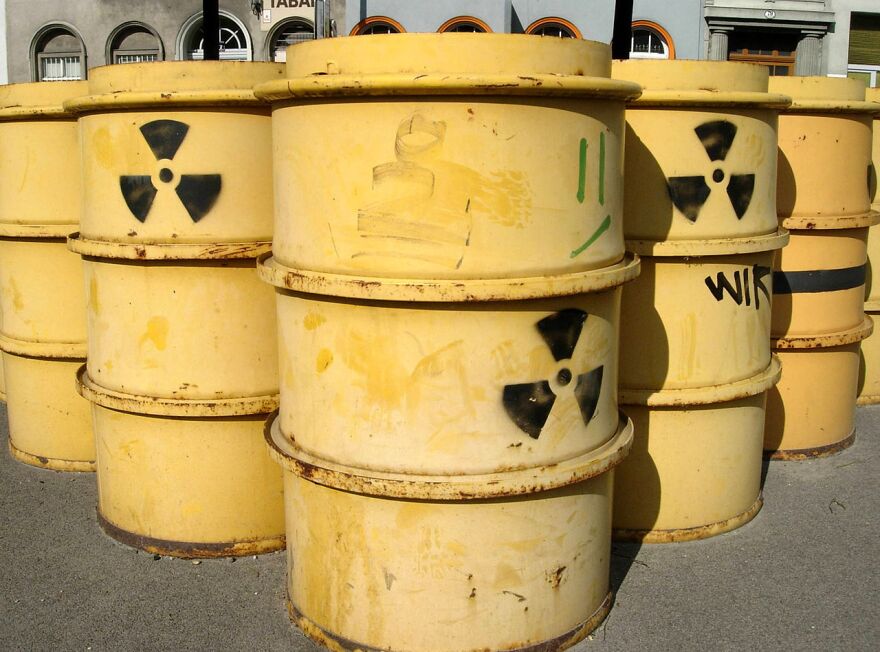Nuclear weapons contractors around the U.S. made mistakes when shipping explosives and toxic chemicals at least 25 times in the last five years, according to government records. And an investigation found that regulators imposed only a few, minor penalties for those potentially dangerous errors.
Patrick Malone is a national security reporter for the Center for Public Integrity. He uncovered this story along with other safety issues at Los Alamos National Laboratory here in New Mexico.
MALONE: What we found is that errors in these types of hazardous shipments are probably more common than the average American thinks. They’re often mislabeled or labeled inappropriately in ways that would make it difficult for a first responder in the case of an accident or – even when things go according to plans – recipients to be prepared for what they’re reckoning with. So, they might not immediately recognize that they’re dealing with something hazardous because it hasn’t been labeled.
KUNM: Los Alamos Laboratory here in New Mexico shipped unstable, radioactive plutonium via Fed Ex cargo planes. Why is that against regulation?
MALONE: Well, plutonium is authorized only for 'by ground' at present. And that’s because the types of containers, which are very costly to both develop and manufacture, into the millions and millions of dollars, are generally stable only on the ground. That’s because the pressure at altitude can really affect the containers and lead to a radioactive release.
One quote that I read about this shipping mistake was comparing it to leaking like a cheap ballpoint pen, and there is a greater risk of leak when they’re at pressure.
KUNM: So does that mean that the materials are hazardous to the people who are handling them? And do they pose a threat to the health of the folks who are shipping this stuff?
MALONE: It really depends. These are hazardous materials and have restrictions on the way they’re shipped for a reason. The plutonium, for instance, is less dangerous externally than it is internally. So, if someone were to inhale plutonium after one of these releases, depending on how much they inhaled, it could greatly increase their chances of cancer down the road.
Some of the materials that we looked at were actually explosive or toxic chemicals, each of which poses some threat to human beings if there was an accident, or if they were opened inappropriately.
KUNM: Now, this stuff was mislabeled so that it wasn’t clear that it was as hazardous as it is.
MALONE: One of the examples that came to light that had never been reported before occurred five years ago at the University of New Mexico where small samples of plutonium were on sheets of metal foil that should have had no plutonium. They were unlabeled, and in the process of handling those as they normally would a benign metal, it caused a release there at the University of New Mexico and contamination of some equipment.
KUNM: Has this been reported?
MALONE: It hasn’t. Our story was the first time that it had ever been reported. And in fact, it had not even been overtly shared with the regulators in New Mexico—the New Mexico Environment Department, which acts as a representative to the Nuclear Regulatory Commission. They’re the ones that issue, for instance, the broad-spectrum license that the University of New Mexico holds that allows them to possess radioactive materials.
Because the amount of plutonium involved was pretty slight, this was never reported even to the regulators. Certainly, there was never a press release from the university or Los Alamos or anyone alerting the public to this fact.
KUNM: Do you think there’s enough transparency around what’s going on when these mistakes are made? Or what’s going on with regards to safety protocol and training at these facilities?
MALONE: I think it’s often overlooked because there are a million other things at the forefront of our minds, right? And there is a lot to consider about the nuclear weapons program, and some of it has to do with the amount of influence that these contractors have, but much of it is just general sort of well-being, of public health, worker safety, worker health.
They’re dealing in a very sensitive arena where there’s a lot of secrecy, as there probably should be, around nuclear secrets. But sometimes that tendency toward secrecy drifts into areas such as just public accountability. You really have to fight and work hard to get information about the mistakes that these people have made because it’s rare that they put out a press release about it.
*****
Read all of Malone's stories in the Nuclear Negligence series.


